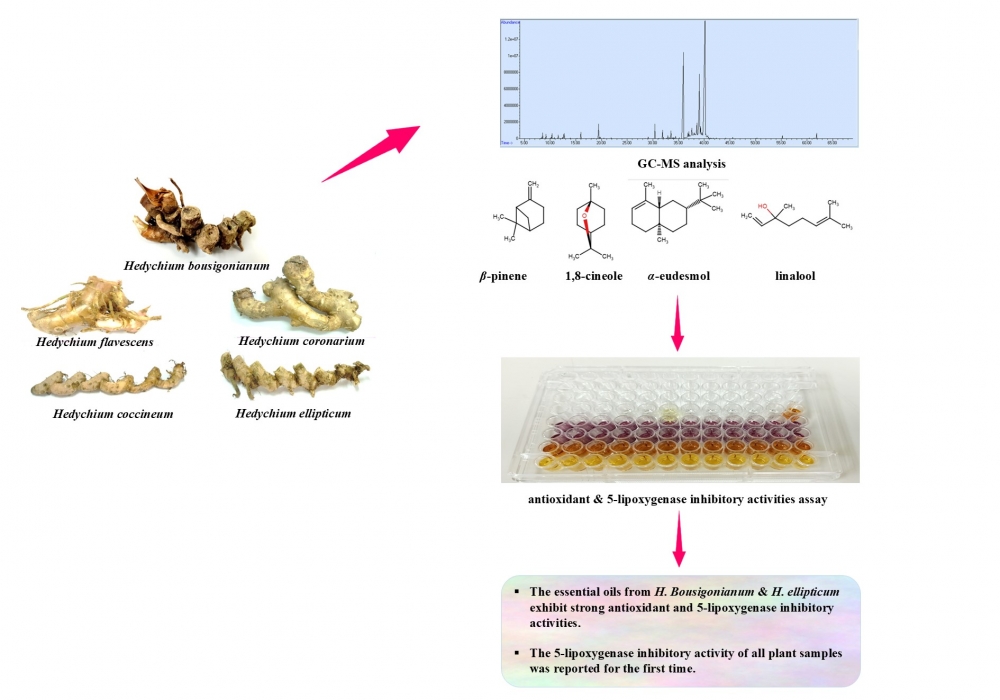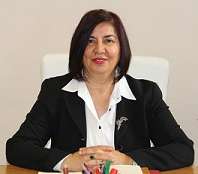Records of Natural Products
A scientific open access journal in the field of natural products.LATEST ARTICLES
Cytotoxic phloroglucinol glucosides from microalgae (Spirulina platensis)

Two new phloroglucinol glucosides, spiruplatosides A (1) and B (2) along with six known compounds, including 5,7-dimethoxyflavone (3), 5-hydroxy-7,4'-dimethoxyflavone (4), 5,7,4'-dimethoxyflavone (5), terephthalic acid dimethyl ester (6), terephthalic acid-(2-hydroxyethyl ester)-methyl ester (7), 13S-hydroxy-9Z,11E-octadecadienoic acid (8) were isolated from the microalgae Spirulina platensis. Compounds 1–8 were evaluated for cytotoxic activity against SK-LU-1 and HepG2 cancer cells. Compounds 1 and 2 were the most active with IC₅₀ values ranging from 1.40 to 3.66 μM. Compounds 4 and 5 showed moderate effects with IC50 values ranging from 66.09 to 74.46 μM.
DOI http://doi.org/10.25135/rnp.2510.3663 Keywords Spirulina platensis microalgae spiruplatoside phloroglucinol glucoside cytotoxic activity DETAILS PDF OF ARTICLE © 2026 ACG Publications. All rights reserved.Two undescribed phenylpropanoid derivatives from Notopterygium incisum roots with anti-inflammatory potential

Two previously undescribed phenylpropanoid derivatives, including a terpenylated coumarin (1) and a ferulic acid analogue (2), were isolated from the roots of Notopterygium incisum (Umbelliferae). Their structures were successfully established using spectroscopic techniques, including mass spectrometry (MS), nuclear magnetic resonance (NMR), and electronic circular dichroism (ECD) spectroscopy. In vitro anti-inflammatory assay using a lipopolysaccharide-stimulated RAW264.7 macrophages indicated compounds 1 and 2 showed anti-inflammatory potential by inhibiting the secretion of NO at the concentra-tion of 7.5 μM.
DOI http://doi.org/10.25135/rnp.2511.3718 Keywords Notopterygium incisum phenylpropanoid derivatives nitric oxide anti-inflammatory DETAILS PDF OF ARTICLE © 2026 ACG Publications. All rights reserved.GC-MS profiling and in vitro assessment of antioxidant and 5-lipoxygenase inhibitory activities of essential oils from five indigenous Hedychium species in Thailand

The genus Hedychium (Zingiberaceae) consists of rhizomatous aromatic plants widely utilized in Thai traditional medicine and cosmetic formulations. Although recognized ethnopharmacological, the phytochemistry and bioactivity of Thai Hedychium species have great potential for drug development. This study investigated the chemical profiles, in vitro antioxidant capacities, and in vittro 5-lipoxygenase (5-LOX) inhibitory activities of essential oils hydrodistilled from the fresh rhizomes of five Thai species—H. bousigonianum, H. coccineum, H. coronarium, H. ellipticum, and H. flavescens. Gas chromatography–mass spectrometry (GC–MS) analysis revealed distinct, species-specific chemotypes, characterized by α-eudesmol (37.41%) in H. bousigonianum; β-pinene (27.42% and 35.38%, respectively) in H. coccineum and H. flavescens; linalool (26.40%) in H. coronarium; and 1,8-cineole (89.36%) in H. ellipticum. The essential oils from the fresh rhizome of H. bousigonianum, H. coccineum, H. coronarium, H. ellipticum, and H. flavescens demonstrated antioxidant activity across multiple assays. Their free radical scavenging capacity was confirmed by the DPPH assay (IC₅₀ = 17.92 ± 0.62, 20.26 ± 0.53, 20.02 ± 0.89, 18.27 ± 0.60, and 22.12 ± 0.60 µg/mL, respectively) and the ABTS assay (IC₅₀ = 13.16 ± 0.95, 19.02 ± 0.43, 18.09 ± 0.34, 11.81 ± 0.67, and 19.34 ± 0.27 µg/mL, respectively). Similar trends were observed in the superoxide anion (IC₅₀ = 28.41 ± 0.64, 28.96 ± 0.51, 31.47 ± 0.58, 26.19 ± 0.61, and 29.12 ± 0.42 µg/mL, respectively) and hydroxyl radical assays (IC₅₀ = 26.67 ± 0.73, 27.98 ± 0.37, 28.92 ± 0.31, 25.34 ± 0.81, and 32.45 ± 0.55 µg/mL, respectively). Furthermore, the essential oils showed 5-LOX inhibitory activity (IC₅₀ = 57.32 ± 1.09, 67.50 ± 1.70, 60.31 ± 1.25, 55.84 ± 1.53, and 75.34 ± 2.28 µg/mL, respectively), supporting their potential anti-inflammatory properties. Notably, the essential oils from H. bousigonianum and
H. ellipticum showed the most potent dual antioxidant and anti-inflammatory activities, highlighting their promise as natural sources of bioactive compounds for future pharmaceutical development.
test
test
DOI test Keywords test 53453 543534534534 5435435345 DETAILS PDF OF ARTICLE © 2007 ACG Publications. All rights reserved.
